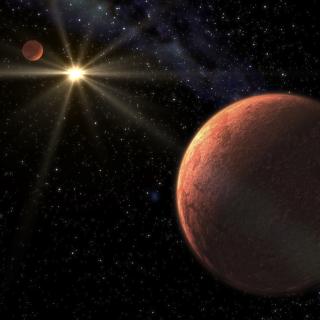Bibcode
Baxter, R. B.; Dobbie, P. D.; Parker, Q. A.; Casewell, S. L.; Lodieu, N.; Burleigh, M. R.; Lawrie, K. A.; Külebi, B.; Koester, D.; Holland, B. R.
Referencia bibliográfica
Monthly Notices of the Royal Astronomical Society, Volume 440, Issue 4, p.3184-3201
Fecha de publicación:
4
2014
Número de citas
15
Número de citas referidas
11
Descripción
We present a spectroscopic component analysis of 18 candidate young,
wide, non-magnetic, double-degenerate binaries identified from a search
of the Sloan Digital Sky Survey Data Release 7 (DR7). All but two
pairings are likely to be physical systems. We show SDSS
J084952.47+471247.7 + SDSS J084952.87+471249.4 to be a wide DA + DB
binary, only the second identified to date. Combining our measurements
for the components of 16 new binaries with results for three similar,
previously known systems within the DR7, we have constructed a mass
distribution for the largest sample to date (38) of white dwarfs in
young, wide, non-magnetic, double-degenerate pairings. This is broadly
similar in form to that of the isolated field population with a
substantial peak around M ˜ 0.6 M⊙. We identify an
excess of ultramassive white dwarfs and attribute this to the primordial
separation distribution of their progenitor systems peaking at
relatively larger values and the greater expansion of their binary
orbits during the final stages of stellar evolution. We exploit this
mass distribution to probe the origins of unusual types of degenerates,
confirming a mild preference for the progenitor systems of
high-field-magnetic white dwarfs, at least within these binaries, to be
associated with early-type stars. Additionally, we consider the 19
systems in the context of the stellar initial mass-final mass relation.
None appear to be strongly discordant with current understanding of this
relationship.
Proyectos relacionados

Estrellas de Baja Masa, Enanas Marrones y Planetas
Se investigan los procesos que conducen a la formación de estrellas de baja masa, enanas marrones y exoplanetas y caracterizar las propiedades físicas de estos astros en varias etapas evolutivas. Las estrellas de muy baja masa y las enanas marrones son probablemente los objetos más numerosos de nuestra Galaxia, pero no por ello están
Rafael
Rebolo López